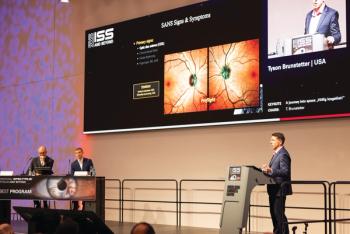
Corneal cross-linking effective for keratoconus relapse after penetrating keratoplasty
A recent study demonstrates the safety and efficacy of treating eyes with cross-linking after keratoconus relapses following keratoplasty.
Treating eyes with cross-linking (CXL) after keratoconus relapses following keratoplasty is safe and effective and results in stabilisation of the vision,1 according to Noa Kapelushnik, MD, and Noa Avni-Zauberman, MD, the study’s lead authors. They are from the Goldschleger Eye Institute, Sheba Medical Center, Sackler Faculty of Medicine, Tel Aviv University, Tel Hashomer, Israel.
While this scenario is rare, visual deterioration and corneal graft thinning can result. To preclude that the authors advised that a corneal stabilising treatment be performed.
They evaluated the safety and efficacy of this approach in a retrospective analysis of eyes in which keratoconus relapsed after a penetrating keratoplasty and the eyes were treated with CXL.
The main outcome measures were the changes in maximal keratometry (Kmax), best-corrected distance visual acuity (BCVA), thinnest corneal thickness (TCT), and central corneal thickness (CCT), and the development of complications.
The investigators identified 10 consecutive eyes of 9 patients in whom keratoconus relapsed after penetrating keratoplasty.
In these eyes, the preoperative median BCVA before the CXL and 1 year after the CXL procedure remained stable (P = 0.68). The median (interquartile range) of the Kmax improved from 63.2 (24.9) diopters (D) before the CXL procedure to 62.2 (27.1) D at 1 year postoperatively (P = 0.028). The median TCT and CCT did not change significantly 1 year after CXL. No complications developed after the procedure, the authors reported.
Investigators concluded that CXL in eyes with keratoconus relapse after keratoplasty is a safe and effective procedure that enables visual stabilisation and might result in improved keratometry. Routine follow-up after keratoplasty should be performed to detect early relapses of keratoconus. CXL should be performed in a timely fashion when a relapse is documented.
Reference
1. Kapelushnik N, Avni-Zauberman N, Herber R, et al. Corneal cross-linking for treatment of keratoconus relapse in post-keratoplasty eyes. Int Ophthalmol. 2023; published online July 12; https://doi.org/10.1007/s10792-023-02807-x
Newsletter
Get the essential updates shaping the future of pharma manufacturing and compliance—subscribe today to Pharmaceutical Technology and never miss a breakthrough.












































